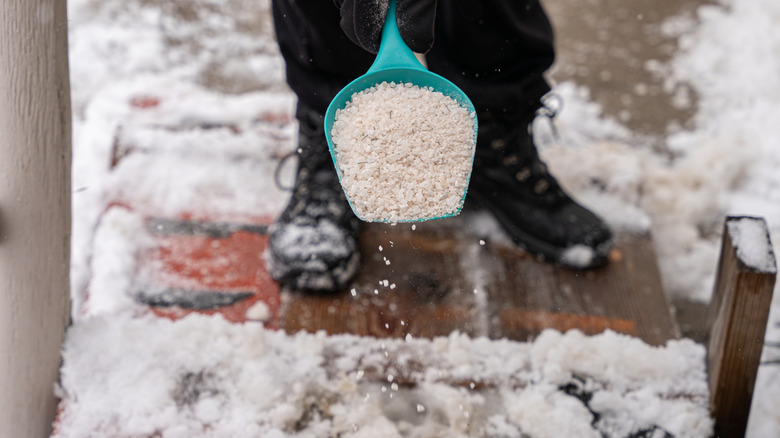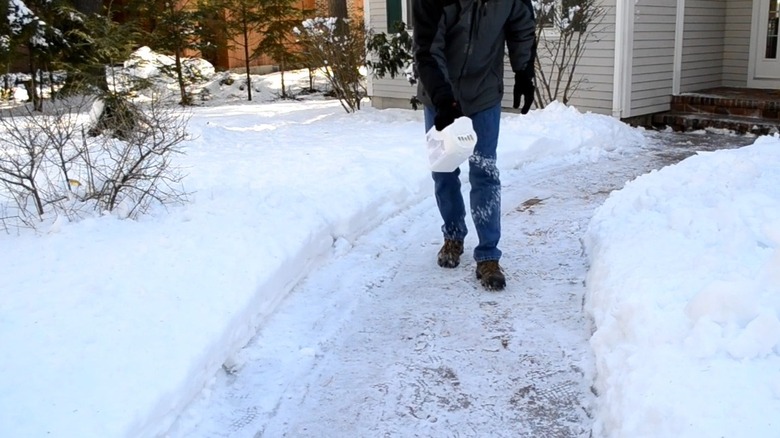Ditch The Rock Salt: There's A Better, Easier Way To Remove Snow & Ice From Driveways
We may receive a commission on purchases made from links.
Rock salt is a common kitchen ingredient that doubles as an effective de-icer. Besides its easy availability, its economical pricing and ease of use have turned it into a popular method to melt snow in the winter. Alas, it's not the magical solution you think it is. In fact, there are some serious downsides of using too much deicing salt in the winter. To elaborate, it'll damage your concrete or asphalt driveway and walkway over time. Plus, its runoff can be harmful to water bodies, marine life, soil, and nearby vegetation. Solid granules might harm your pets, too. The worst part, though? Rock salt won't be of much use if the temperatures in your region dip below 15 degrees Fahrenheit.
Considering these disadvantages, you'd be better off ditching rock salt and trying out a better way to remove snow and ice from your driveway: magnesium chloride. It'll work effectively even when temperatures hover around 0 and even up to -10 degrees Fahrenheit, but its actual lower limit will depend on the pellets you opt for. For example, Harris' Fast Acting 100% Magnesium Chloride will melt ice even at -13 degrees Fahrenheit. Moreover, it's a safer option for your pets and plants (as long as you don't use too much). Additionally, repeated use will have less negative impact on your tiled, stone, or concrete surface. However, one drawback is that magnesium chloride is more expensive than rock salt. And since you need large quantities to melt ice throughout winter, it can burn a hole in your pockets, especially if you're on a tight budget.
How to use magnesium chloride to melt ice and snow from your driveway
After you get magnesium chloride pellets, remove all the loose and fluffy snow coating your driveway. You can either shovel it off or try out the simple but brilliant hack to clean up snow easily using a leaf blower. Once the top layer is dealt with, get a few pellets and sprinkle them around the path. Follow the manufacturer's instructions and use the recommended amount only. Don't use too much, or it'll be bad for your yard and may corrode your driveway. Alternatively, lay it down as soon as it starts snowing to prevent it from bonding to your walkway.
This method works because magnesium chloride is hygroscopic by nature, which means it'll draw in moisture from the surrounding air. So, it'll melt the fallen ice on your driveway and turn it into liquid brine within a few moments. Better yet, it rarely leaves any residue behind, so you won't have to worry about cleanup later. However, it's a double-edged sword. Although convenient, you'll have to keep applying the pellets for them to be effective.

